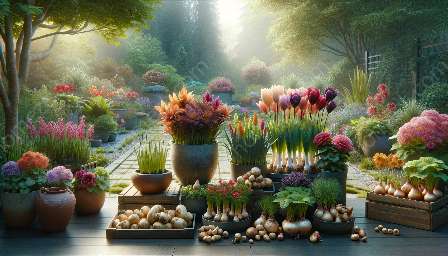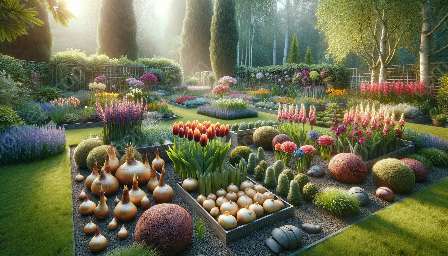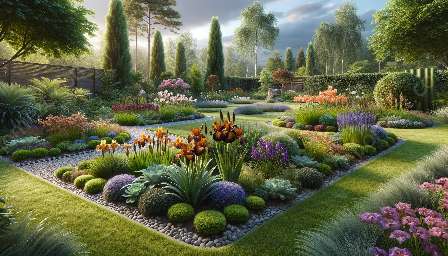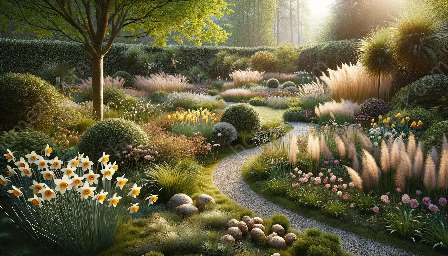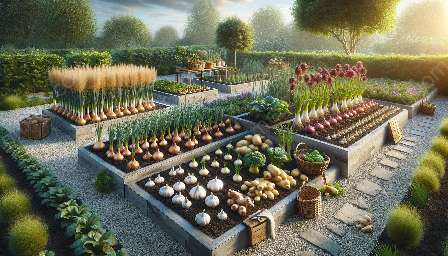When it comes to creating a beautiful and vibrant garden, bulbs, tubers, and rhizomes play a crucial role. These plant types come in a variety of species, offering a wide range of colors, shapes, and sizes. Caring for bulbs, tubers, and rhizomes requires a combination of knowledge, attention, and dedication. In this comprehensive guide, we'll delve into the best practices for nurturing these plants to ensure they thrive and bring stunning displays to your garden.
Understanding Bulbs, Tubers, and Rhizomes
Before we explore how to care for bulbs, tubers, and rhizomes, it's important to understand what these plant types are and the unique characteristics they possess.
Bulbs
Bulbs are underground storage structures consisting of layers of modified leaves or storage organs. Examples of bulbs include tulips, daffodils, and lilies. These plants store essential nutrients and energy to support their growth and development.
Tubers
Tubers are thickened, underground stems or storage organs that serve as a food reserve for the plant. Potatoes and dahlias are common examples of tuberous plants. Tubers have the ability to produce new shoots and roots, enabling them to propagate and grow.
Rhizomes
Rhizomes are horizontal, underground stems that continuously produce new shoots and roots. They are responsible for the plant's spread and reproduction. Irises and ginger are some well-known examples of rhizomatous plants.
Planting Bulbs, Tubers, and Rhizomes
Proper planting is the first step in caring for bulbs, tubers, and rhizomes. It's essential to choose the right location and provide the optimal conditions for these plants to thrive.
Location
When selecting a location for planting, consider the specific requirements of the bulbs, tubers, or rhizomes you intend to grow. Some plants prefer well-drained soil with full sunlight, while others thrive in partially shaded areas. Be mindful of the soil type and moisture levels to ensure the best results.
Depth and Spacing
The depth at which bulbs, tubers, and rhizomes are planted is crucial to their development. Generally, larger bulbs should be planted deeper than smaller ones. Adequate spacing between plants allows for proper airflow and prevents overcrowding, reducing the risk of disease.
Soil Preparation
Preparing the soil before planting is essential to provide a fertile and supportive environment for bulbs, tubers, and rhizomes. Incorporating organic matter, such as compost or well-rotted manure, can enhance the soil structure and fertility, ensuring a strong foundation for healthy growth.
Watering and Maintenance
Once planted, bulbs, tubers, and rhizomes require consistent and appropriate care to thrive. Watering, fertilizing, and maintaining the garden are essential aspects of ensuring the health and vitality of these plants.
Watering
Watering is crucial, especially during the initial stages of growth. It's important to keep the soil consistently moist but not waterlogged. Proper irrigation helps promote strong root development and prevents dehydration, particularly during hot, dry periods.
Fertilization
Applying a balanced fertilizer at the right time can greatly benefit bulbs, tubers, and rhizomes. A slow-release fertilizer with the appropriate nutrients can support healthy growth and vibrant blooms. Be mindful of over-fertilization, as it can cause damage to the plants.
Maintenance
Regular maintenance tasks, such as removing weeds, deadheading flowers, and monitoring for pests and diseases, are crucial for the overall well-being of the garden. Keep a watchful eye on the plants and address any issues promptly to ensure they remain healthy and robust.
Winter Care and Protection
Caring for bulbs, tubers, and rhizomes doesn't end with the growing season. Proper winter care and protection are vital to safeguard these plants from harsh weather conditions and ensure their survival for the following year.
Mulching
Applying a layer of mulch over the soil surface provides insulation and protection for bulbs, tubers, and rhizomes during the winter months. Mulch helps regulate soil temperature, prevents frost heaving, and reduces moisture loss, offering essential protection against extreme weather.
Storage
If you're growing tender bulbs, tubers, or rhizomes that are susceptible to frost, it's important to store them properly during the winter. Lift these plants from the ground and store them in a cool, dark, and dry place to protect them until the next growing season.
Providing Shelter
In regions with severe winters, providing shelter for bulbs, tubers, and rhizomes can prevent frost damage and extend their longevity. Consider using protective covers, such as garden cloches or row covers, to shield the plants from freezing temperatures and harsh winds.
Replanting and Division
As bulbs, tubers, and rhizomes continue to grow and multiply, replanting and division become necessary for maintaining their health and promoting vigorous growth and flowering.
Replanting
After the growing season, some bulbs, tubers, and rhizomes may benefit from being lifted, divided, and replanted. This process can rejuvenate the plants and prevent overcrowding, ensuring they have ample space to thrive and produce stunning blooms.
Division
Division involves separating offsets or daughter bulbs from the parent plant to create new individual plants. This practice can rejuvenate overcrowded clumps and allow for the propagation of additional plants, expanding the beauty of your garden.
Conclusion
Caring for bulbs, tubers, and rhizomes is a rewarding and enriching experience that adds splendor and color to any garden. By understanding the unique needs of these plant types and providing attentive care throughout the growing season and beyond, you can ensure that your garden flourishes with an array of breathtaking flowers and foliage. Whether you're a seasoned gardener or a beginner with a green thumb, cultivating and nurturing bulbs, tubers, and rhizomes can bring joy and beauty to your outdoor space for years to come.







